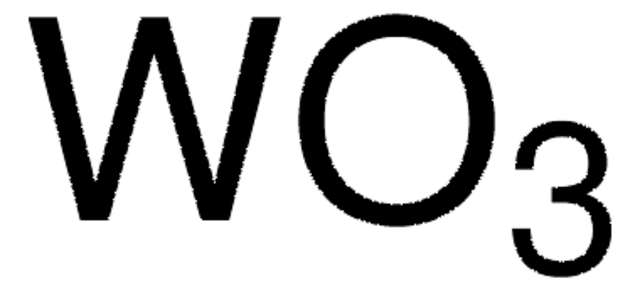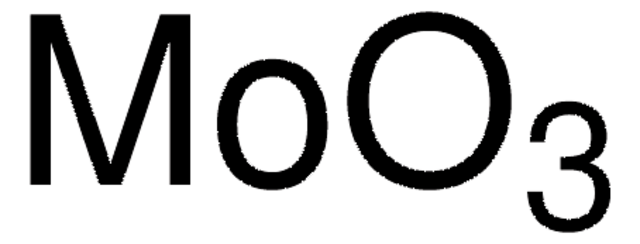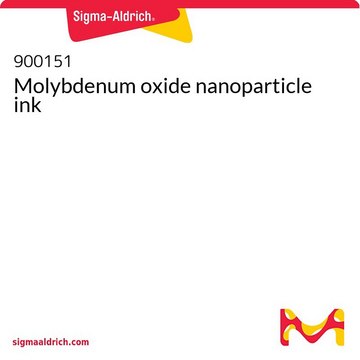793353
Tungsten oxide (WO3-x) nanoparticle ink
Sinonimo/i:
Avantama P-10, Nanograde P-10, Tungsten oxide nanoparticle dispersion, Tungsten oxide suspension, WO3 dispersion, WO3 ink
About This Item
Prodotti consigliati
Stato
dispersion
Livello qualitativo
Concentrazione
2.5 wt. % in 2-propanol
Dimensione particelle
<50 nm (BET)
Densità
0.7992 g/mL at 25 °C
Descrizione generale
Annealing temperature <100°C.
Applicazioni
Altre note
Working conditions: Application and film drying under nitrogen (or low humidity)
Post-treatment: Annealing of deposited WO3-x films at 80°C - 120°C
Note legali
Avvertenze
Danger
Indicazioni di pericolo
Consigli di prudenza
Classi di pericolo
Eye Irrit. 2 - Flam. Liq. 2 - STOT SE 3
Organi bersaglio
Central nervous system
Codice della classe di stoccaggio
3 - Flammable liquids
Classe di pericolosità dell'acqua (WGK)
WGK 1
Punto d’infiammabilità (°F)
53.6 °F - closed cup
Punto d’infiammabilità (°C)
12 °C - closed cup
Scegli una delle versioni più recenti:
Certificati d'analisi (COA)
Non trovi la versione di tuo interesse?
Se hai bisogno di una versione specifica, puoi cercare il certificato tramite il numero di lotto.
Possiedi già questo prodotto?
I documenti relativi ai prodotti acquistati recentemente sono disponibili nell’Archivio dei documenti.
I clienti hanno visto anche
Articoli
Find advantages of inorganic interface layer inks for organic electronic & other applications.
Professor Tokito and Professor Takeda share their new materials, device architecture design principles, and performance optimization protocols for printed and solution-processed, low-cost, highly flexible, organic electronic devices.
Recent progress in the area of solution-processed functional materials has led to the development of a variety of thin-film optoelectronic devices with significant promise in the industrial and consumer electronics fields.
Il team dei nostri ricercatori vanta grande esperienza in tutte le aree della ricerca quali Life Science, scienza dei materiali, sintesi chimica, cromatografia, discipline analitiche, ecc..
Contatta l'Assistenza Tecnica.








